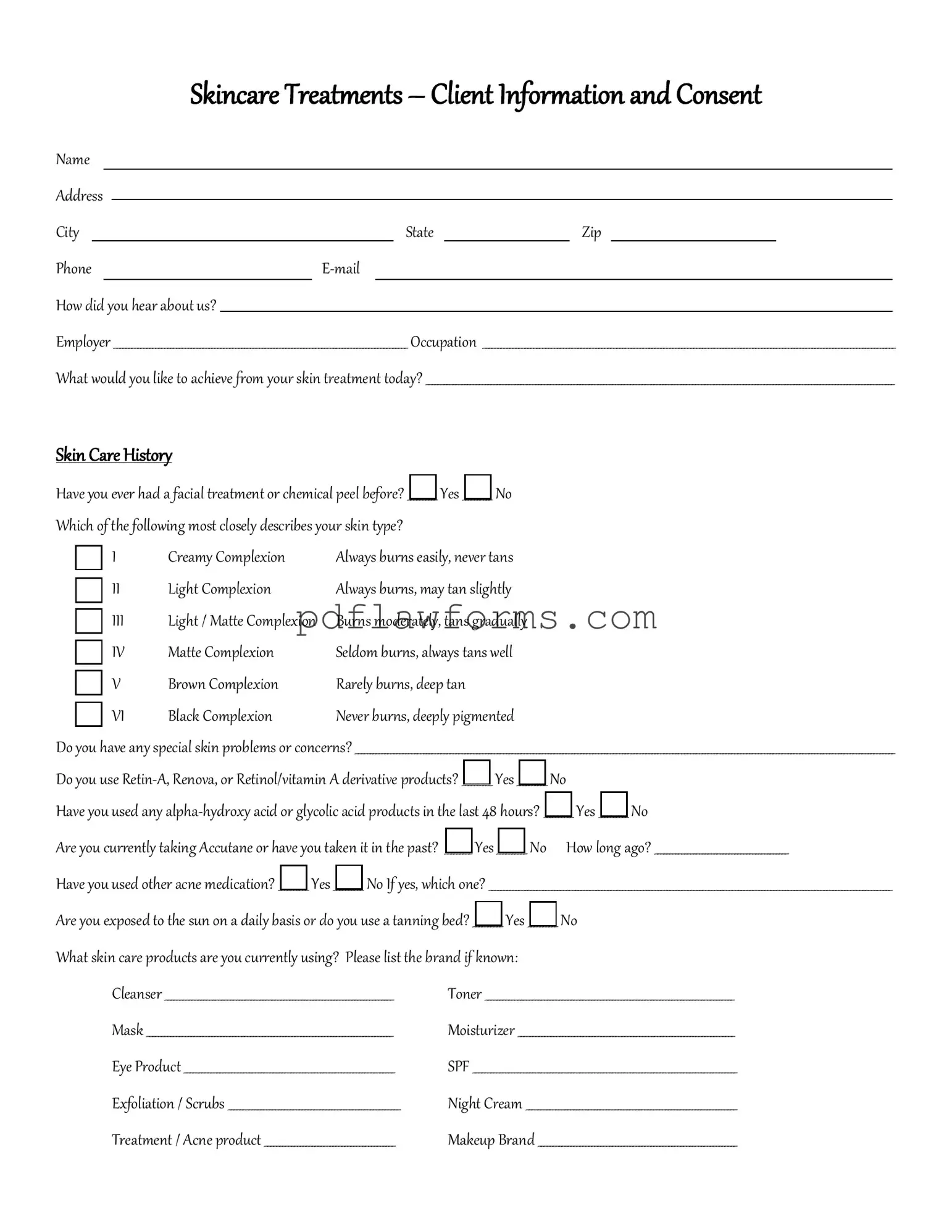Filling out a Facial Consent form can seem straightforward, but there are common mistakes that individuals often make. One frequent error is not reading the entire form before signing. Skimming through the document may lead to missing important information about potential risks and procedures.
Another mistake involves providing incomplete personal information. Failing to fill in all required fields can delay the process and create confusion. Always double-check that all sections are filled out correctly.
Some individuals neglect to ask questions about the form or the procedure. If something is unclear, it is essential to seek clarification. This helps ensure that you fully understand what you are consenting to.
Many people also forget to disclose relevant medical history. Omitting this information can lead to complications during the treatment. It’s important to be honest about any allergies, medications, or previous skin treatments.
In addition, individuals sometimes fail to date the form. Not dating the document can cause issues later, especially if there is a dispute about when consent was given.
Another common oversight is not keeping a copy of the signed form. Retaining a copy for personal records can be beneficial for future reference. This ensures you have documentation of what you consented to.
Some may rush through the form and make typographical errors. Simple mistakes in spelling or numbers can lead to misunderstandings. Taking the time to review the form can prevent these issues.
People occasionally misinterpret the language used in the form. If the wording is confusing, it’s important to ask for help rather than making assumptions. Misunderstanding terms can lead to unintended consent.
Lastly, individuals may forget to check the expiration date of the consent. Some forms have a limited time frame for validity. Being aware of this can help ensure that the consent remains effective.
By avoiding these mistakes, individuals can ensure that their Facial Consent form is completed accurately and effectively. Taking the time to understand and fill out the form properly can help protect both the individual and the provider.
